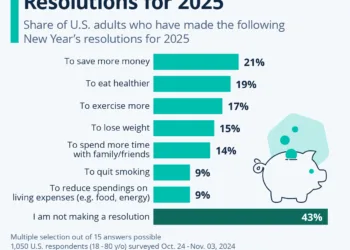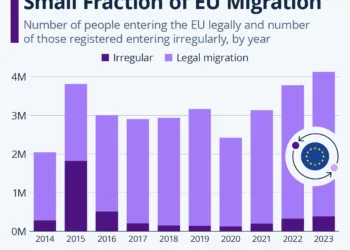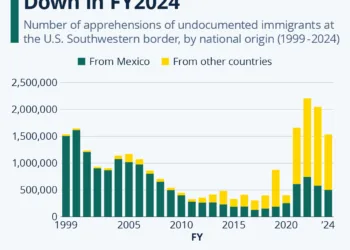Understanding Inflation’s Impact on Household Expenditures
Inflation is a term that has dominated financial news over the past few years, especially as consumer prices in the United States have surged. While in recent months inflation has begun to decrease, it still leaves a lasting mark on household finances. Examining how inflation has affected different categories of spending helps paint a clearer picture of the economic landscape.
The Inflation Landscape Since February 2020
The Consumer Price Index for All Urban Consumers (CPI-U) serves as a critical gauge of inflation, reflecting changes in the prices paid by urban consumers for a basket of goods and services. Since February 2020, a period marked by the onset of the COVID-19 pandemic, the CPI-U has risen sharply, recording an increase of 21.7 percent. This rise is particularly alarming when compared to the Federal Reserve’s target inflation rate of 2 percent, which would have ideally led to a 9.7 percent increase in prices over the same timeframe. This stark contrast underscores the magnitude of the inflationary pressures faced by consumers.
Categories of Expenditure Affected by Inflation
Not all categories of spending have felt the heat of inflation equally. It’s crucial to delve into specific categories to understand where prices have surged and where they have remained relatively stable.
Transportation: The Most Affected Category
The transportation sector has experienced the highest inflation rate since February 2020. Prices in this category, which includes new and used vehicles, airline fares, and gasoline, have skyrocketed. The significant increase is attributed to various factors, including supply chain disruptions, a rebound in consumer demand, and fluctuations in fuel prices. For many households, the rising costs in this sector have translated into noticeable changes in their monthly budgets.
Food and Beverages
Food and beverages have not been immune to inflationary trends. Since the pandemic began, consumers have faced a staggering price increase of 26 percent in this category. Factors such as supply chain challenges, increased transportation costs, and heightened demand have all contributed to this rise. This surge has made basic necessities more expensive, impacting household spending significantly.
Housing: A Steady Climb
Housing is another essential expenditure category that has felt the impact of inflation, with prices rising by 24.9 percent since February 2020. This increase encompasses more than just rents or mortgage payments; it also includes costs associated with household energy. As the demand for housing has surged, coupled with limited supply in many markets, prices have continued to climb, placing additional financial strain on renters and homeowners alike.
Categories with Minimal Price Increases
While certain categories have witnessed substantial price hikes, others have remained largely unaffected by inflation.
Education and Communication
Remarkably, the categories of education and communication have seen the least amount of inflation, with a mere 4.9 percent increase since February 2020. This category encapsulates a range of expenses, from tuition fees to telephone services. The relative stability in costs here provides a small relief to families heavily burdened by rising prices elsewhere.
Recreation, Apparel, and Medical Care
Recreation, apparel, and medical care are other sectors where price increases have been modest compared to the overall inflation crisis. These sectors have recorded more stable prices, allowing for some financial breathing room amidst the more volatile categories. However, this doesn’t negate the broader inflationary effects impacting overall consumer behavior and spending patterns.
The Energy Component in Inflation
An important aspect to consider in this discussion is energy prices, which have seen an increase of 27 percent since February 2020. While energy prices are not always categorized separately in consumer expenditures, they play a critical role in overall inflation dynamics. Higher energy costs directly influence transportation and housing expenses, thereby creating a ripple effect across various spending categories.
In summary, the current inflation landscape presents a complex picture of how consumer prices have evolved across different sectors. While some categories have experienced dramatic price increases, others have remained relatively stable. Understanding these dynamics is vital for consumers as they navigate their budgets in a post-pandemic economy.








